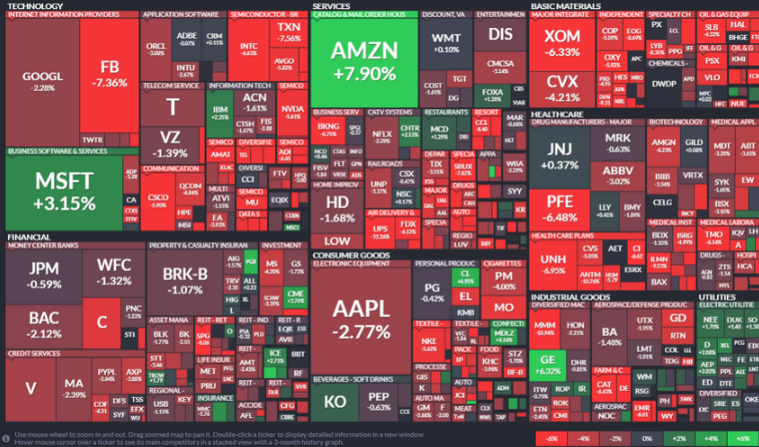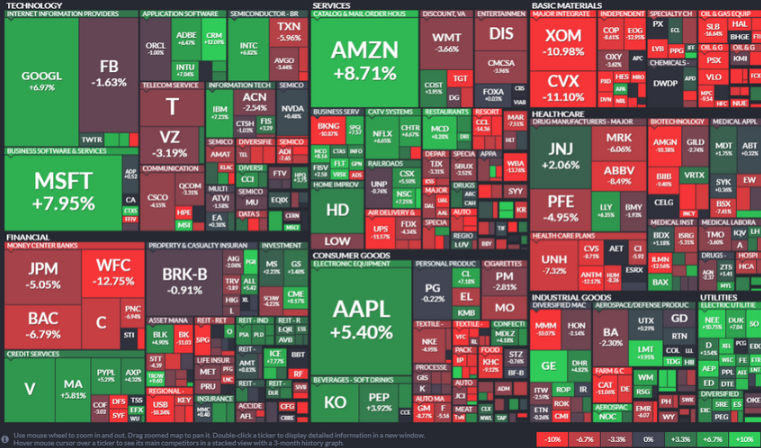We have been writing about the strong potential for a deeper market rotation in the US and global markets for well over 60+ days. In fact, our researchers predicted an August 2019 breakdown date based on Super-Cycle patterns that, eventually, pushed into 2020 as the US/China trade negotiations and other global news kept global markets in a low volatility bullish trend throughout the end of 2019.
We've highlighted some of our research posts over the past 30+ days to help illustrate the technical and price patterns that our research team has identified and shared.
December 20, 2019: WHO SAID TRADERS AND INVESTOR ARE EMOTIONAL RIGHT NOW?
December 16, 2019: TODAY's STOCK RALLY RESEMBLES 1999
December 2, 2019: NEW PREDICTED TRENDS FOR SPX, GOLD, OIL NAT GAS
Technical analysis is based on the premise that price reflects all news and expectations the instant that news or data is known. A common term in technical analysis is “bias”. This is when the price trend is substantially more bullish or bearish by nature or expectation. Bias occurs when investing conditions mostly eliminate risk (for the bullish side) and opportunity (for the bearish side). When traders feel they can enter trades without any real risks (trading long) or when they feel there is no opportunity for the markets to rally (trading short), then a BIAS exists in the markets.
When the global markets rotate and volatility extends to much higher levels, the markets change from a “biased trend” to what technical analysts call “True Price Exploration”. When this happens, price begins to operate under the price principles of Gann, Fibonacci and Elliot Wave theories where price attempts to rotate to new lows or highs in an attempt to “seek out” clear support and resistance levels before establishing a new longer-term “biased trend”.
Volatility Ahead
We believe the global markets are about to enter a very volatile period of sector rotation. Certain sectors may see a much deeper price exploration than others. For example, consumer product manufacturers focused on U.S. and European markets may see very limited risks compared to the Industrial Supply sector where a global economic slowdown could really hurt their future expectations.
These two market-sector maps highlight the change in the direction and scope of these changes over the past week and 30 days.

source: Finviz.com

source: Finviz.com
Pay very close attention to the sectors that were moderately or strongly weak in the 1-month chart and continue to weaken in the 1-week chart (Financial, Property, Telecommunications, Telecom Services, Healthcare, Biotech, Basic Materials, Industrial Goods, Lodging, Resorts, Travel, Hospitality, Food, Packaging, Textile. The list is rather impressive and it suggests the Coronavirus has somewhat panicked the markets and consumers. Yes, many of these consumers will continue to go out for food, entertainment, and other essentials – but what if 15% to 25% of them cut back on these activities and decide to stay home more often and watch movies or play games?
I remember in 1990 when Desert Storm started. Just before this war began, the U.S. economy was clicking right along. Yet within 10 days of the war starting, things started to change on the roadways and markets. I also noticed a change in consumer spending with a friend's computer gaming distribution company. All of a sudden, consumers slowed their external purchasing activities and focused more on protectionist activities. We believe this same type of event is going to quickly unfold within the U.S. and other nations as the virus extends over the next 30+ days.
This is why I believe the volatility of price and market sector rotation will continue for at least 60+ days as the globe attempts to contain and eliminate the risks associated with this virus. We understand the risks in the U.S. and Canada are very small at the moment, but that has not stopped shoppers from emptying the shelves at the local hardware and pharmacy stores for surgical masks and other supplies. Trust us, people are already well into the protectionist-mode and are preparing for what may happen over the next 30+ days.
This creates an opportunity for technical investors and traders. The potential for deeper price rotations and extended opportunities resulting from an end of bias along with volatile price exploration allow us to target very quick and exciting trades.
In part II of this research post, we'll highlight three specific sectors we believe are poised for great trade setups as a result of the volatility and rotation in the global markets.
